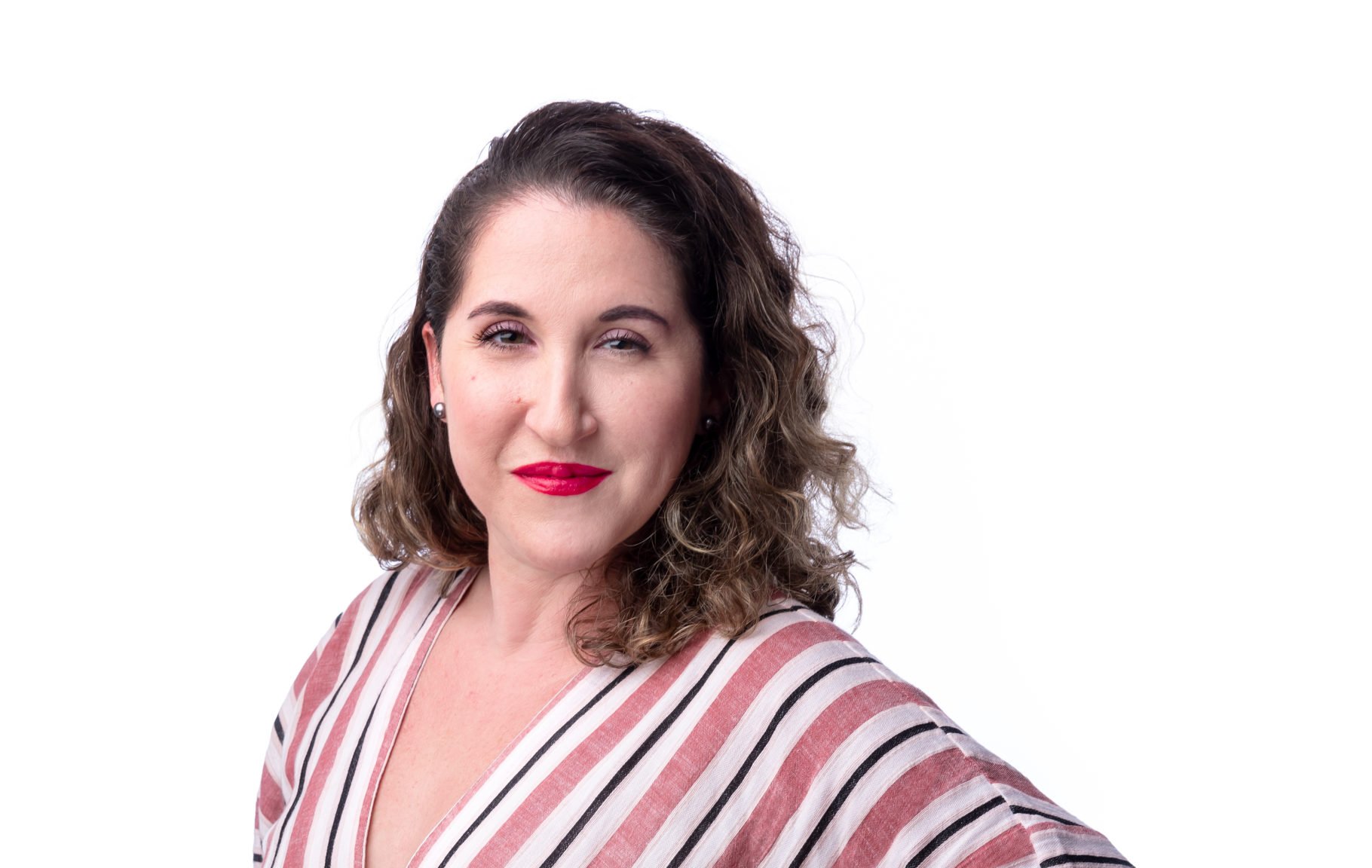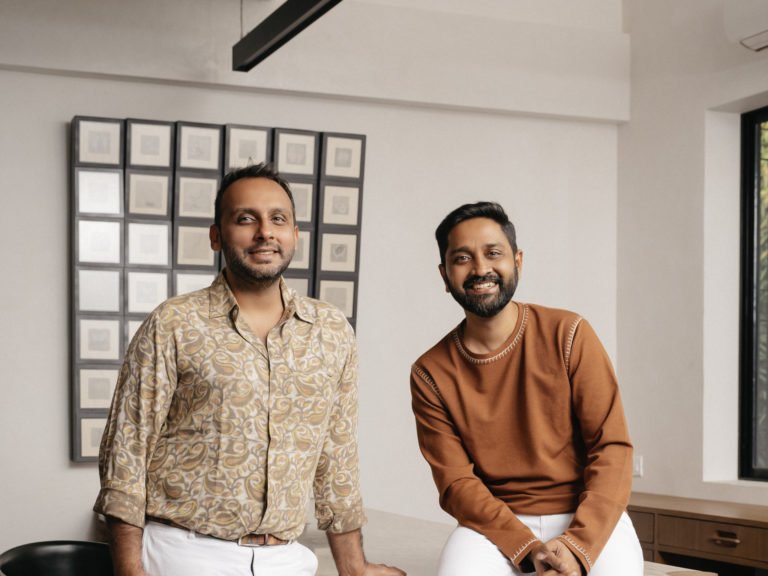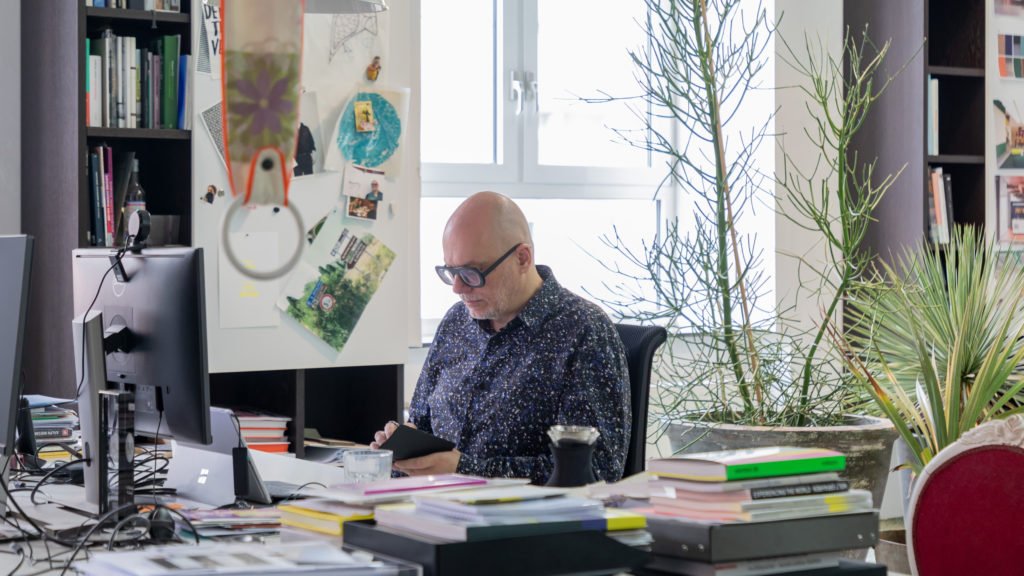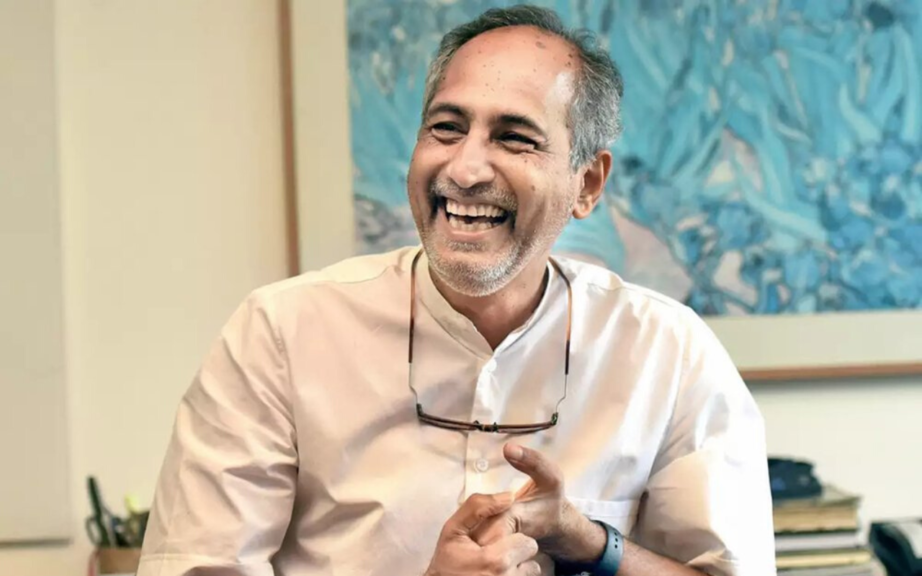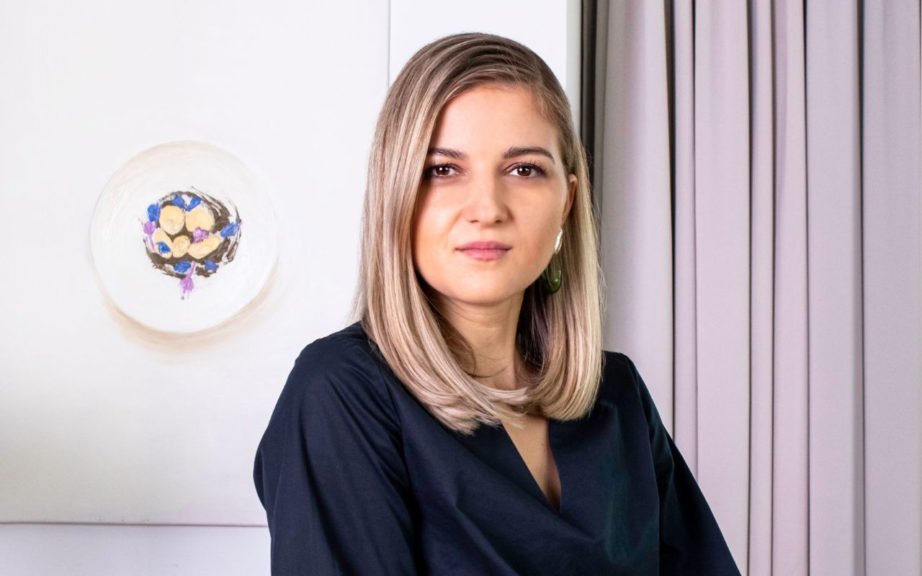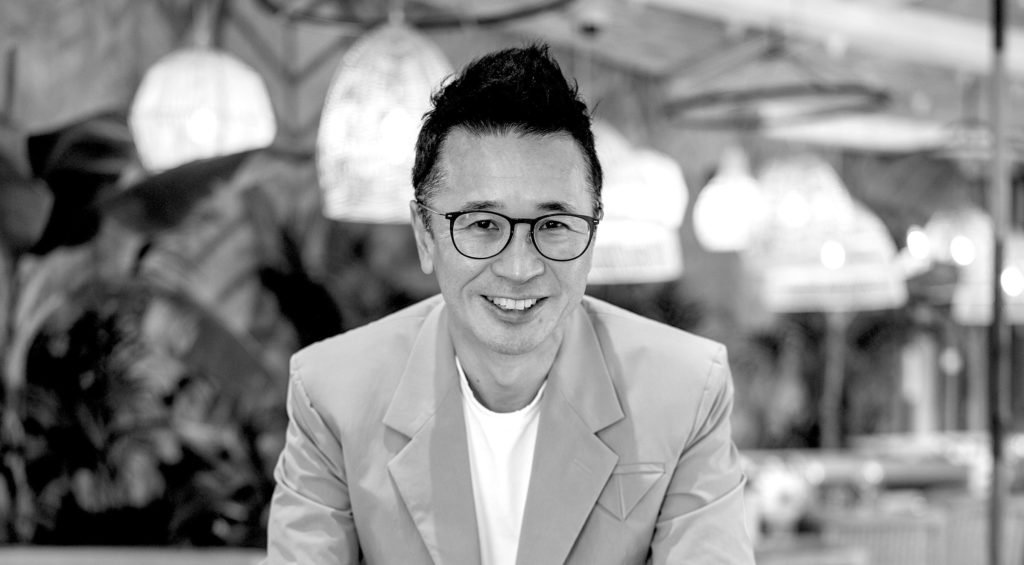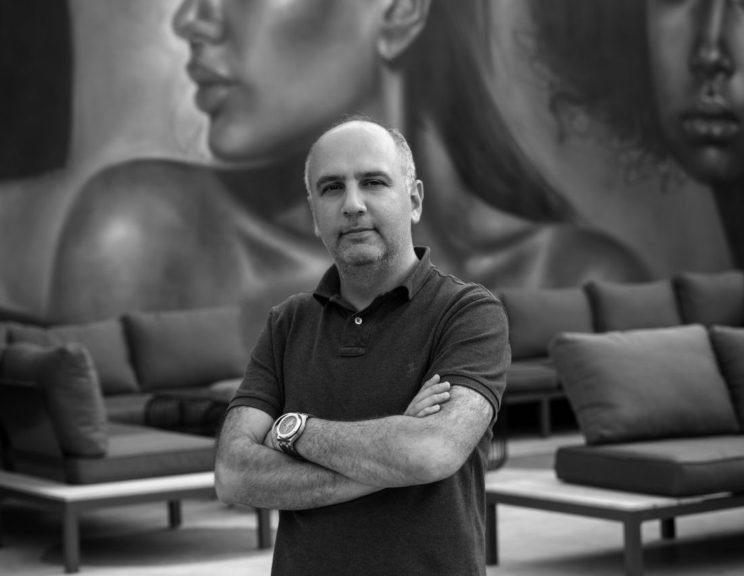What brought you to this career?
I’m a third-generation architect. My great grandfather was an architect, my father was an architect, and then I became an interior architect. I went to Pratt Institute in Brooklyn, New York, and was an artist up until I decided to major in interior design.
I was always into the arts, and practically lived in the art room when I was at school and as a child. So I joined Pratt thinking I would become an art teacher. I had no idea about lighting as a career at the time. I grew up with architects and was raised in Arizona, but my father is from Philadelphia – Society Hill – and he did a lot of renovations of brownstones. He was known for basically gutting and restructuring the interior brownstones and would save all the gargoyles from buildings that were being demolished, so our whole house was full of strange gargoyles. He was just a really creative person and growing up, I think he taught me to see and visualise things that didn’t exist.
I then moved onto industrial design because I liked making products, and then considered sculpture or photography. Finally, I opted to do Interior Architecture because I knew it was a launching pad for whatever I decided to do later. I didn’t really feel at that time that I was ready to make that hard choice, but because I grew up at my dad’s drafting table from a young age helping him build his models, it made sense to pursue this career.
Soubu, W French Quarter, New Orleans, designed while working for and in collaboration with REVEAL Design Group
I met my first boss, who was a lighting designer, in 2003, when bartending at a local Italian restaurant in the West Village while completing my thesis. He was one of the regulars there, and one day we got to chatting and he asked me what I did. It was during this conversation that I learned that he was a lighting designer. I told him I’d wished that I’d known I could major in lighting, and asked if he needed an intern. He had actually just started his own company and asked me to bring in my portfolio. And when he saw it, he pointed out that a lot of my design already focused on lighting, something the dean of my department had also noticed. I had three months left until I graduated and it was just a natural fit. We got along very well, and because his was a startup, I didn’t feel like I was stuck in some corporate environment
He was really a mentor to me, and offered to teach me rather than me having to pursue a masters in lighting. As soon as I graduated, he offered me a full time job. I spent eight and a half years working with him in New York and all across North America. And in 2008, he asked if I’d be willing to move to New Delhi and start a studio there. I jumped at the chance. I loved India and it was a once-in-a-lifetime opportunity! It was at that time that I fell in love with hospitality and the process, plus I got into designing all of the fixtures with the interior designer. I don’t know if it’s because I kind of came from the hospitality side of being a bartender and waitress and I understood the backbone of operations and how it works, but from there on, I started to specialise.
Al Bandar Rotana, designed while working for and in collaboration with CD+M Lighting Group
We worked on the Fairmont project in Jaipur and it kept going from there. In 2010, when my stepfather fell ill, I decided to come back to New York to be closer to family. It was almost like a reverse culture shock after spending so much time in India. I realised I needed a change because I had been working for eight and a half years nonstop. So I went to work for Reveal – they had landed an international project and were looking for an international designer. This allowed me to go back to being a designer, which was great, but I think once you get the international bug, it’s there. So between that and the cold winters of New York, after two years, I decided it was time to leave.
I was convinced that I was Australia bound, and was interviewing with a lot of interior and lighting design companies there, but in that process, I met Ted Ferreira, the Managing Director of CD+M, who convinced me to meet with him and one of his directors, Shawn Whitaker. In one meeting, I was sold to the thought of coming to Dubai to develop their hospitality department. I’m an extrovert at the core, and love to engage with people, so this was a perfect fit. Three weeks after my meeting, I was on a plane Dubai bound, and hit the ground running, growing the team at CD+M and working on high-end hospitality projects.
Now with Studio Mark, I’m getting right back into all the stuff that I did before, such as theatrical lighting installations. You have to keep educating yourself and challenging yourself, as it’s very easy to get stuck in a niche. I like to blur the boundaries. Bill Johnson always used to call me the outlaw, because I never did what everybody else would, approach wise. I try to really push it.
How would you describe your design style?
Creative and innovative. I’m not a big ego person and fly under the radar most of the time. I come from a family that was well known – my aunt was a famous photographer in the US – but I never used that as a platform for my own professional gain. And the reason for that is because she taught me that if you’re really a creative person, you don’t need to tell everybody you’re creative. They’ll see it. My fulfillment comes from that, and the enjoyment of the work.
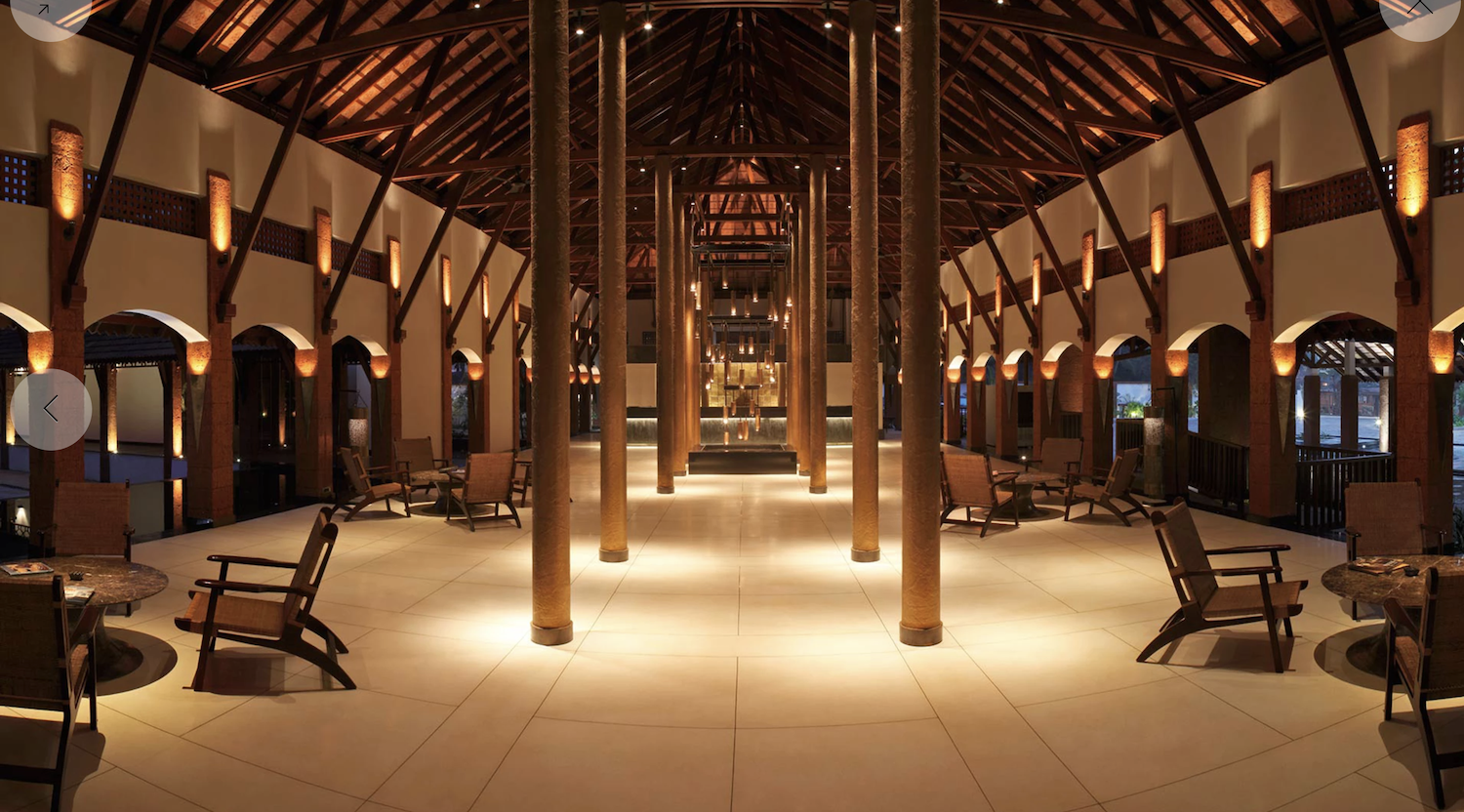
Alila Diwa, Goa, India
What is the most challenging thing about being a lighting designer in the region?
In my entire career, I’ve struggled the most, culturally, with coming to Dubai, because it felt a bit closed at first. Trying to engage with the local culture proved quite challenging and I still haven’t been able to break through that barrier. However, I do have some young local clients that are trying to burst through the bubble and I love working with them.
I do see a massive divide here between the treatment of men and women in the field – getting the respect of contractors, etc, is hard. You have to push back a bit, and manage the very strongly male dominated culture. It took me many years and I’m still not used to it. As a New Yorker, I’m not the person you’re going to walk all over but it’s still a challenge.
Also, professionally, it’s a completely different model here to the States – in the US there are reps and they work by territory. So the reps don’t fight each other because your territory is your territory and it’s very translucent. Here there are a lot of under the table deals, and it gets very political. Plus, a lot of suppliers will substitute because they can’t always supply certain manufacturers – they might be exclusive, for example, so it can get exhausting. We can review anywhere from two to 15 iterations from different suppliers and so now the stance we’ve taken is to review up to two suppliers that the owner would like to use and up to two submittals of those. I don’t like to get in the middle but I also don’t want to lose the integrity of a project I spent four months designing. So I’m not saying no to a certain fixture just to be difficult. I’m saying no because it’s going to fail in five months, or it’s not going to actually get the right light output, or it’s not energy efficient, or it’s a fire risk. These things are really important.
One of the other struggles in the Middle East is getting the clients to understand what we really do – they often don’t see why they need lighting experts, as they believe that interior designers or architects can do this. What they don’t know is that the interior designers and architects are the first to send the client to us, and they have to explain to them that they’re not lighting specialists.
From left: Vida Hills Hotel, Dubai; Just One, Downtown Design, Dubai
What would be your favorite or most challenging project?
I’m proud of all the projects I’ve ever done. I learned, I grew, I changed throughout all of them. I love every one of them for different reasons. More recently though, one of my favourite projects is the Radisson Blu in Deira Creek, which was Dubai’s first five star hotel. I love it because it’s a historical renovation project. From a lighting standpoint, the control room was one of the oldest I’ve ever seen in Dubai. It presented an immense challenge because how do you renovate a property where you’re not ripping out the ceilings, and how do you really integrate lighting into something that is a historical property? Designers here don’t often have that opportunity. It’s one of the most beloved properties in Dubai.
How do you manage to incorporate sustainability into your designs?
I’ve been on that bandwagon for a long time, especially when LEDs came out. And I do a lot of extra work that I don’t charge for specifically, because I feel like it’s very important for the client to make the right decision. I’m a big advocate for Dark Sky and registered for the UAE. I always think about energy efficiency and light pollution from the very beginning of a project – it’s an integral part of my design process. Dubai is so bright, it’s unbelievable how this city was built without any dark sky regulations.
If you weren’t a lighting designer, what alternative career would you see yourself in?
I think I would have been an archaeologist because I’m fascinated by history and antiques and ruins. I like to specialise in renovation work now because that brings back this kind of childhood dream of being an archaeologist. I think I would have gone that route if my father hadn’t been an architect, and I hadn’t had all these designers around me all the time. It stems from this childhood fascination with fossils and rocks, and finding old abandoned places then trying to put history to that.
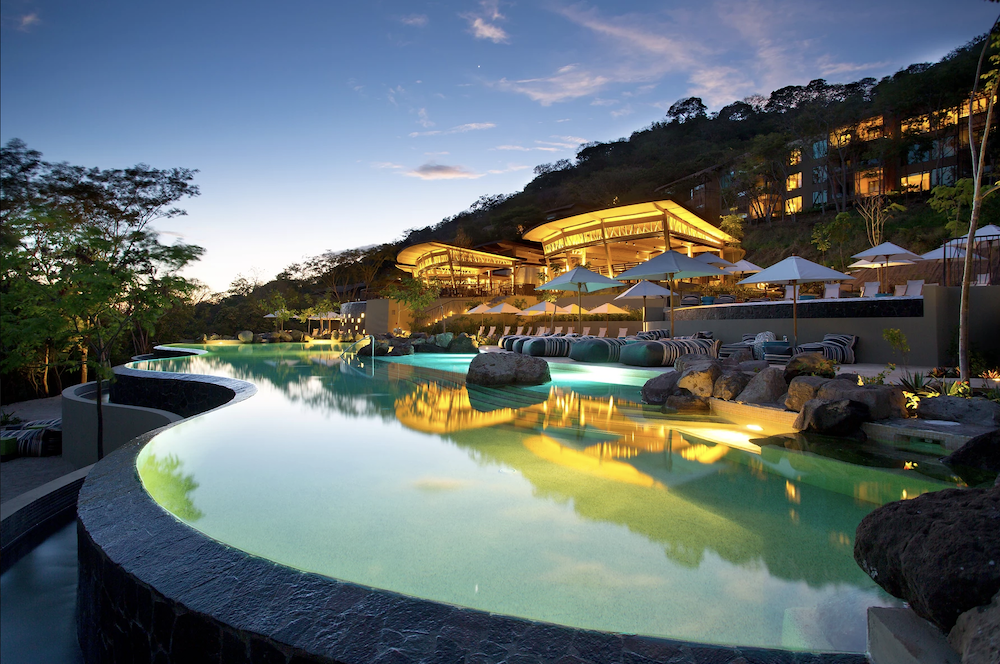
Hyatt Andaz Papago, Costa Rica, Designed while working for and in collaboration with REVEAL Design Group
What do you feel this region needs in terms of lighting design from an education standpoint?
I always volunteer to help where I can with The Lighting Institute, but I think there needs to be more presence at the universities with lighting designers. It needs to be part of the architecture program. The interior design courses in my uni were much heavier in actual build and implementation. You had to take these classes because you had to understand how to use tools. It was a hands-on approach. I’ve taught and mentored groups of students for years here, and I’ll never forget my first class. I brought all my tools, and as I handed them to the students, one of them had actually never seen a power drill and had no idea how to use it. There needs to be more build education in the programs here side by side with theory. You need to be able to take your design idea and bring it into a reality.
Any advice for aspiring lighting designers?
I would say, just keep going. Be extroverted, go to design shows, do your research, have the courage to engage with the design community. Don’t forget the details and no idea is impossible. You just need the right team and the right information. I hated being told that I couldn’t do something because it was too crazy or it was going to be too difficult to build. Everything is possible. The sky really is the limit. The world for women now is so much better than it was, so keep working and pushing and driving. But also be humble in your process – ego can be detrimental to the rest of your career.
Where do you see the lighting design industry headed five or 10 years from now?
I would like to see this profession grow and change into a more positive work culture. I would also like to see our profession be seen for what it is – that we are all architects and designers by trade, and to garner that respect from the design community. I would also hope for a closer culture of lighting designers coming together. There’s plenty of work for everyone, and there should be support from other studios, not only for designers in the region but also for emerging young talent.

